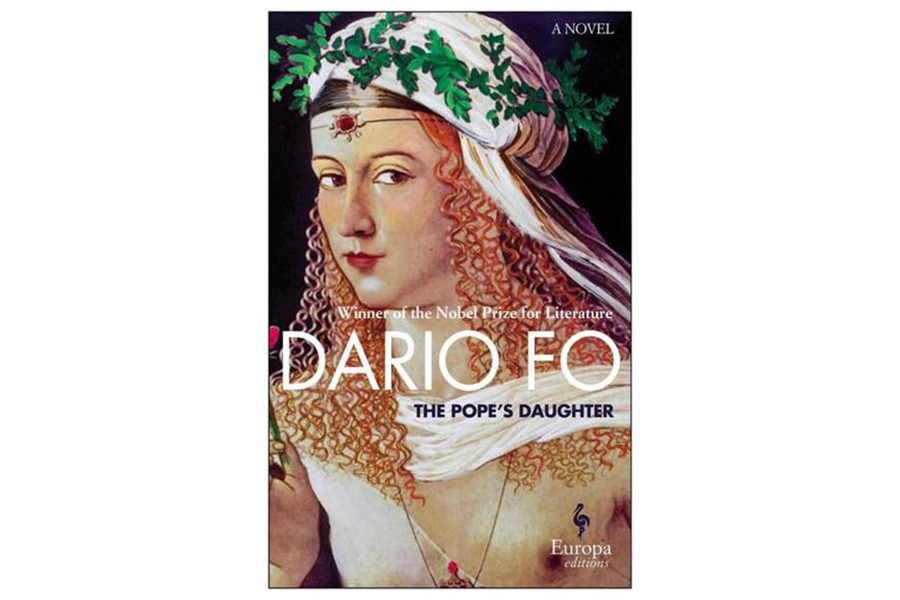'The Pope's Daughter' is Dario Fo's lively sketch of Lucrezia Borgia
Loading...
Lucrezia Borgia has been dogged by nasty stories since long before her death in 1519.
Every age produces its crop of biographers marshaling evidence to prove conclusively that the nasty stories aren't true, that they were born as propaganda cooked up by the enemies Lucrezia's famously hot-tempered brother Cesare, or by the enemies of her scheming father Rodrigo, either before or after he became Pope Alexander VI.
That she watched her brother use unarmed peasants as archery targets? Slander, cry the historians! That she seduced both brother and father, as well as countless others? Calumny! That she mastered the art of poison and practiced it often? A canard of the vilest sort! And yet, the stories persist.
This glittering Renaissance dichotomy has proven an irresistible magnet for novelists, with everybody from W. Somerset Maugham to Mario Puzo taking a turn trying to unravel its mystery. The latest writer to be drawn to the subject is the winner of the 1997 Nobel Prize for Literature, Italian playwright and farceur Dario Fo. In his new departure of a book (this is, improbably and quite delightfully, the 89-year-old author's first novel), The Pope's Daughter, Fo creates a colorful recreation of Lucrezia Borgia's life and turbulent times.
He begins his story with a six-page “preamble” designed to give his readers a quick historical overview of the Borgia family's place in Renaissance history, and then he eases into his narrative right the point in 1492 when Rodrigo Borgia becomes Pope Alexander VI and must break the news to his children, including 16-year-old Cesare and 12-year-old Lucrezia.
What follows is a curious amalgam of genres – from this author we'd expect no less: half historical monograph, half commedia dell'arte stitchwork of scenes working conjectured private moments into the framework of historical events. It's not quite a novel, but it's not quite a biography either; it's a dramatic meditation, accompanied by the author's own illustrations.
The rough outline of Lucrezia's life is dutifully followed: her first marriage to Giovanni Sforza (referred to here by Cesare as “that pusillanimous miscreant,” her second marriage to Alfonso of Aragon, her third marriage to Alfonso d'Este, with whom she had 10 children.
And Fo infuses all of it with liberal amounts of modern idiom (dead as a doornail, acid test, like the back of my hand, and so on) mixed with archly formal dialogue (“You know, I was watching you as you spread your fishnets,” Lucrezia admonishes her father at one point, “I saw every step as you tightened the cords of your narrow mesh-traps ...'”). He's equally likely to take two characters aside and give us their full dialogue about some trifle as he is to announce, about Lucrezia leaving her infant son behind in order to go off and marry (the second) Alfonso, “There is no need to elaborate on how profound the mother's grief must have been.”
Fo is part college lecturer, constantly using phrases like “let us now turn to” or “let us now consider” (and footnoting his references) and part stage presenter, telling his readers “there is nothing left for us to do but drop the curtain and change the scene.”
Despite the grim nature of much of his story, his prankish, slightly bawdy humor never deserts him. Fo discounts the slanders that have always attended her name (although he does allow her a discreet extramarital lover), but more than that: he shows us Lucrezia herself discounting them, stoutly telling one of her brothers-in-law “I do what I do, and I let others talk about it.”
She cares for poor, defends the wrongly accused, and at one point raises an army to help Cesare, and through it all, this purported femme fatale manages to endear herself to everybody she meets. A French knight calls her “a pearl in this world”; her sister-in-law Isabella d'Este calls her an “angel”; her dying father-in-law says simply, “You've been one of the greatest joys of my life.”
And the result is something not quite like any of the other thousand books written on Lucrezia Borgia: a deeply felt three-dimensional portrait that replaces flamboyant rumors with fallible, admirable humanity. Fo gives a short bibliography of the histories and biographies he consulted while researching his book, but in terms of bringing this much-maligned woman alive before the reader, he's outdone them all.







